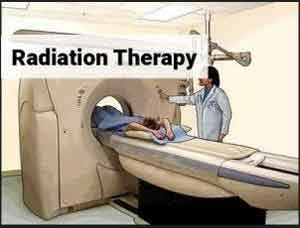- Home
- Editorial
- News
- Practice Guidelines
- Anesthesiology Guidelines
- Cancer Guidelines
- Cardiac Sciences Guidelines
- Critical Care Guidelines
- Dentistry Guidelines
- Dermatology Guidelines
- Diabetes and Endo Guidelines
- Diagnostics Guidelines
- ENT Guidelines
- Featured Practice Guidelines
- Gastroenterology Guidelines
- Geriatrics Guidelines
- Medicine Guidelines
- Nephrology Guidelines
- Neurosciences Guidelines
- Obs and Gynae Guidelines
- Ophthalmology Guidelines
- Orthopaedics Guidelines
- Paediatrics Guidelines
- Psychiatry Guidelines
- Pulmonology Guidelines
- Radiology Guidelines
- Surgery Guidelines
- Urology Guidelines
Proton therapy associated with fewer side effects than X-ray for cancer treatment

Proton therapy for cancer treatment has fewer side effects than X-ray therapy although both the therapies have the same cure rate, according to a recent study, whose findings will be presented at the American Society of Clinical Oncology's annual meeting, to be held from May 31-June 4, 2019 in Chicago, IL. The study is the first major side-by-side comparison of side effects related to proton therapy and X-ray radiation therapy.
X-ray radiation is one of the widely used therapy for cancer treatment, irrespective of whether the disease is in its early stages or the tumor has spread. Radiation therapy, although effective but has a wide range of severe side effects including changes in appetite, vomiting, diarrhea, fever, nausea, skin irritation and fatigue.
Protons are heavy particles that are positively charged and stop once they reach their target. By contrast, X-ray beams are made of photons, which are particles with almost no mass. The lightness of photons enables them to travel easily through the body, but also through healthy tissue on their way out after they've hit their target.
Brian C. Baumann, a radiation oncologist at the Washington University School of Medicine, in St. Louis, MO, and colleagues examined almost 1,500 people with various forms of cancer, such as cancer of the lung, brain, and head and neck, as well as gastrointestinal and gynecological cancers. The patients were receiving the usual treatment protocol that usually cures cancer if it has not spread to the rest of the body -- a combination of chemotherapy and radiation therapy.
The researchers compared the experiences of patients who received proton chemoradiotherapy with those who received photon — X-ray — chemoradiotherapy. They collected data on the patients' side effects and experience of the treatments throughout the study period, adjusting for age and comorbidities. The scientists focused on grade 3 side effects, which are so severe that they require hospitalization.
Also Read: New X-ray imaging system may make frequent X ray exposure safe
They found that:
- The relative risk of severe side effects within 90 treatment days was two-thirds lower for people who received proton therapy, compared with those who received X-ray radiation.
- Only 45 — or 11.5% — of the 391 people who received proton therapy had a severe side effect within 90 days of starting the treatment.
- By comparison, 301 of the 1,092 people who received X-ray therapy — or 27.6% — had a severe side effect within the same timeframe.
- There was no statistically relevant difference in the survival rates, meaning that proton therapy was just as effective a treatment as X-ray radiation.
Also Read: Proton therapy may protect memory function in children with brain tumor

Disclaimer: This site is primarily intended for healthcare professionals. Any content/information on this website does not replace the advice of medical and/or health professionals and should not be construed as medical/diagnostic advice/endorsement or prescription. Use of this site is subject to our terms of use, privacy policy, advertisement policy. © 2020 Minerva Medical Treatment Pvt Ltd